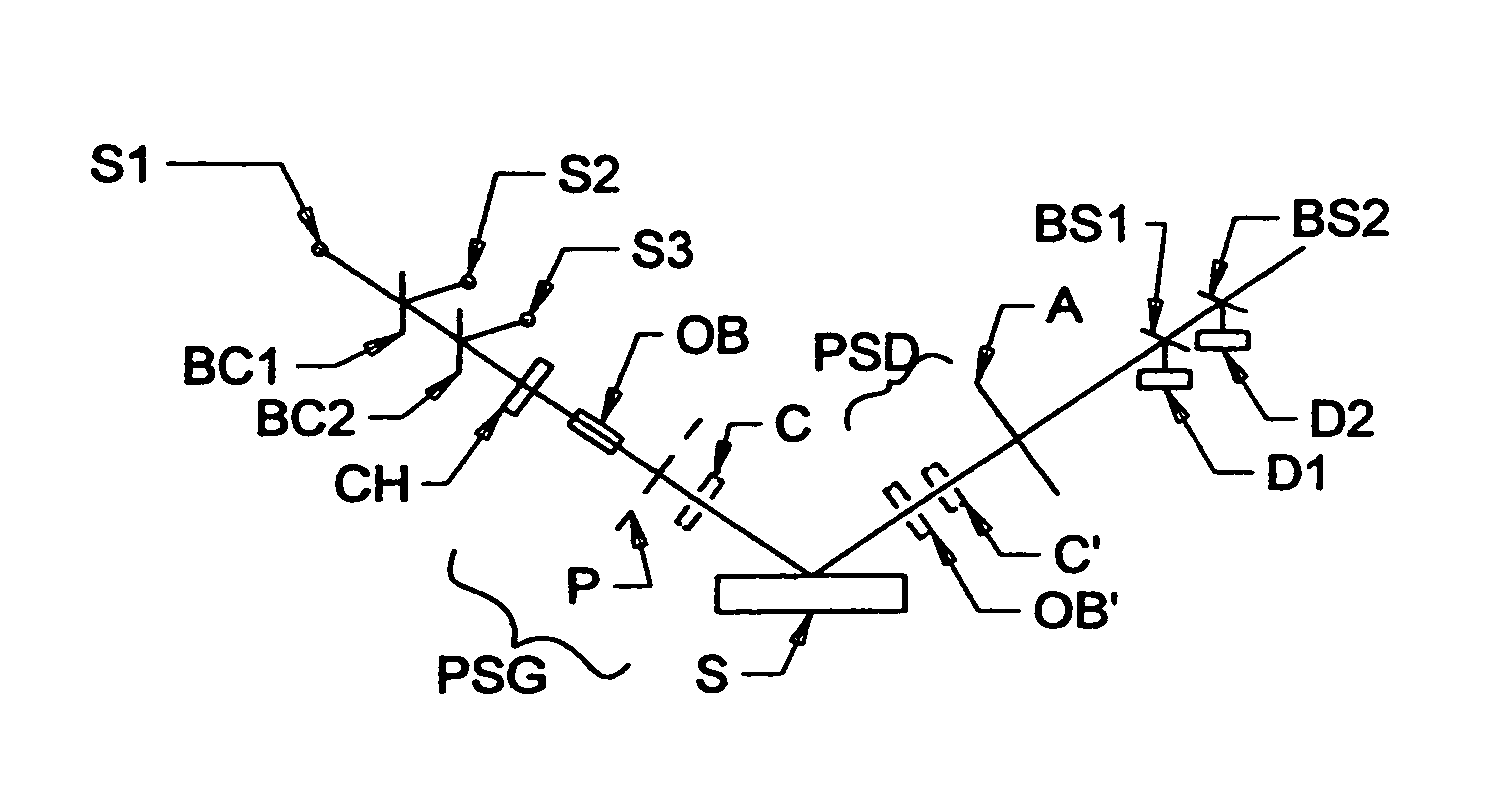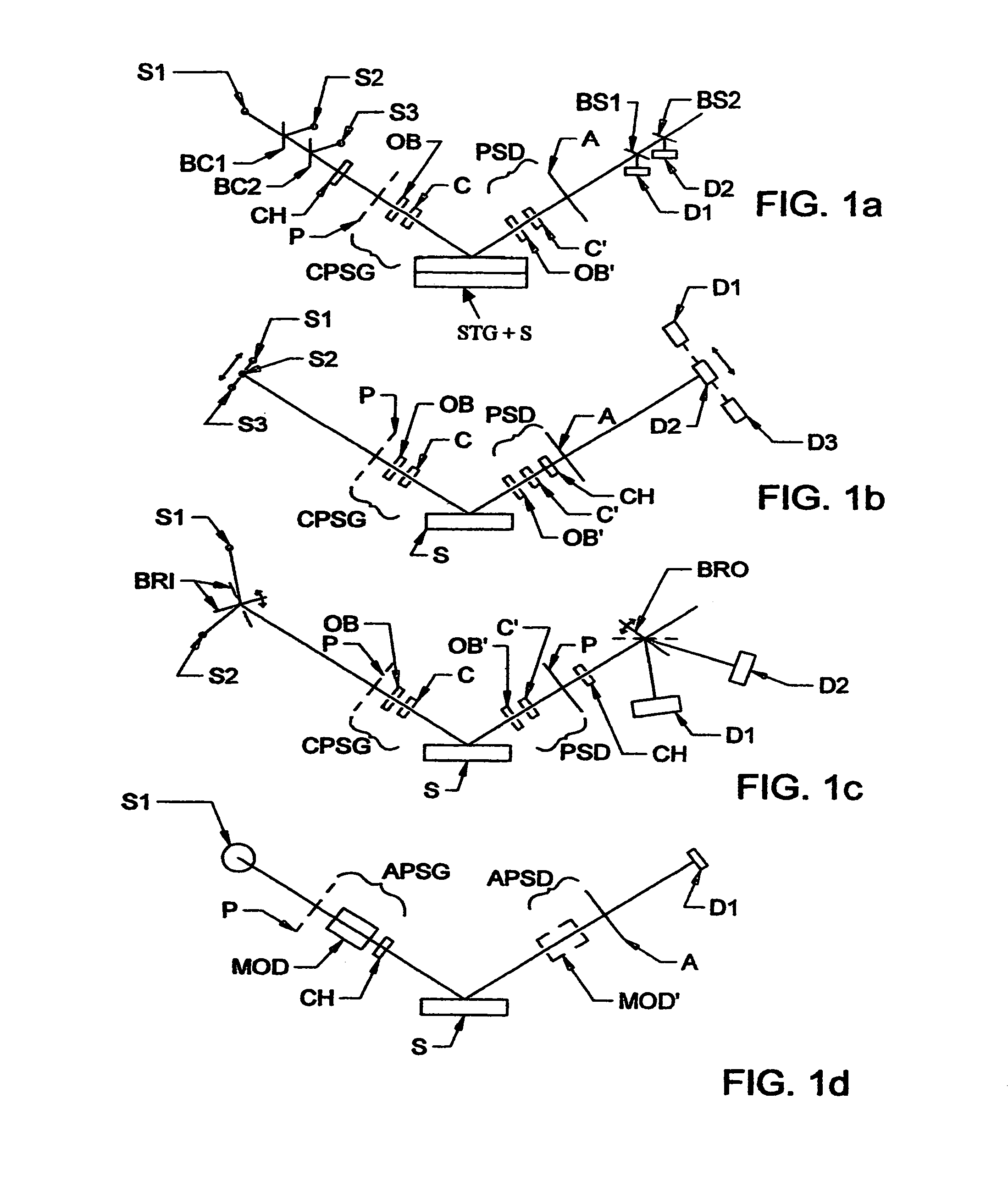Terahertz-infrared ellipsometer system, and method of use
a technology of terahertz-infrared ellipsometer and polarimeter, which is applied in the field of ellipsometer and polarimeter systems, can solve the problems of not being able to provide a synchrotron, and not being able to commercially available thz ellipsometers or polarimeters in the market place, so as to improve the purity of the polarization state exiting
- Summary
- Abstract
- Description
- Claims
- Application Information
AI Technical Summary
Benefits of technology
Problems solved by technology
Method used
Image
Examples
Embodiment Construction
[0299]Turning now to the Drawings, FIGS. 1a, 1b and 1c show various approaches to providing a Present Invention System. FIG. 1a shows Three Sources (S1) (S2) S3), which can each be a backward wave oscillator or a Smith-Purcell cell or a free electron laser or a solid state device. Also demonstrated are Beam Combiners (BC1) (BC2) (BC3) which serve to direct electromagnetic radiation from Sources (S1) (S2) S3), respectively, toward a Sample (S), via optional Polarizer (P), (the natural source polarization can suffice), Odd Bounce Image Rotating System (OB) and Compensator (C). Said optional (P) (OB) (C) components are shown as typically, in combination, being termed a Conventional Polarization State Generator (CPSG) and are included to polarize a beam of electromagnetic radiation provided by a Source (S1) (S2) S3). As regards the Present Invention, however, it is possible that a selected Source (S1) (S2) S3) can provide a beam of electromagnetic radiation which is already polarized, t...
PUM
| Property | Measurement | Unit |
|---|---|---|
| frequency | aaaaa | aaaaa |
| frequency | aaaaa | aaaaa |
| THz frequencies | aaaaa | aaaaa |
Abstract
Description
Claims
Application Information
 Login to View More
Login to View More - R&D
- Intellectual Property
- Life Sciences
- Materials
- Tech Scout
- Unparalleled Data Quality
- Higher Quality Content
- 60% Fewer Hallucinations
Browse by: Latest US Patents, China's latest patents, Technical Efficacy Thesaurus, Application Domain, Technology Topic, Popular Technical Reports.
© 2025 PatSnap. All rights reserved.Legal|Privacy policy|Modern Slavery Act Transparency Statement|Sitemap|About US| Contact US: help@patsnap.com



